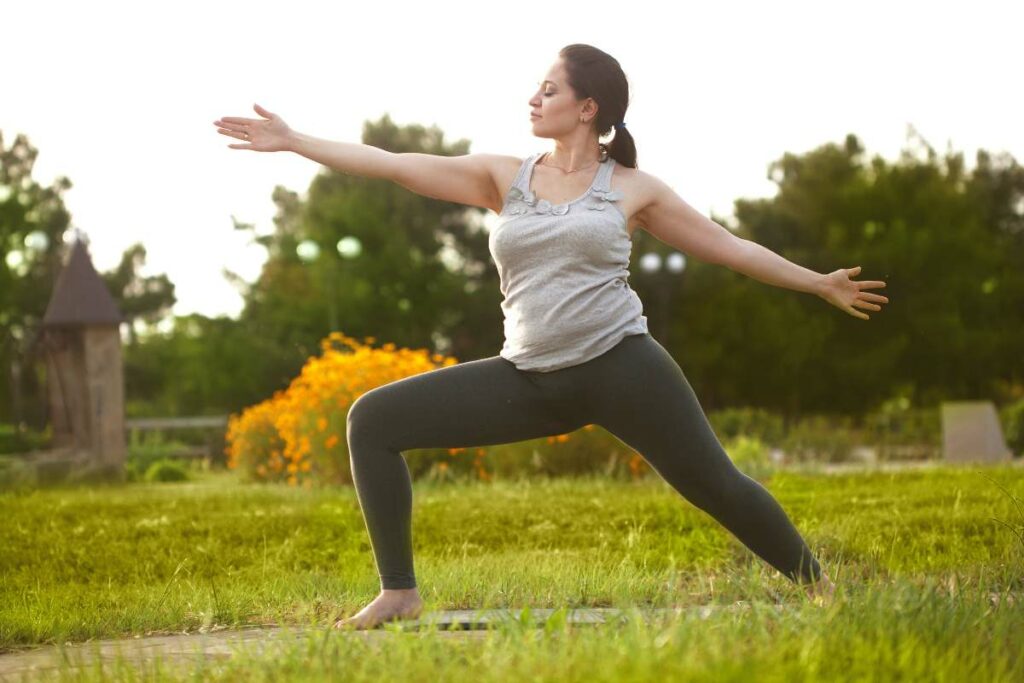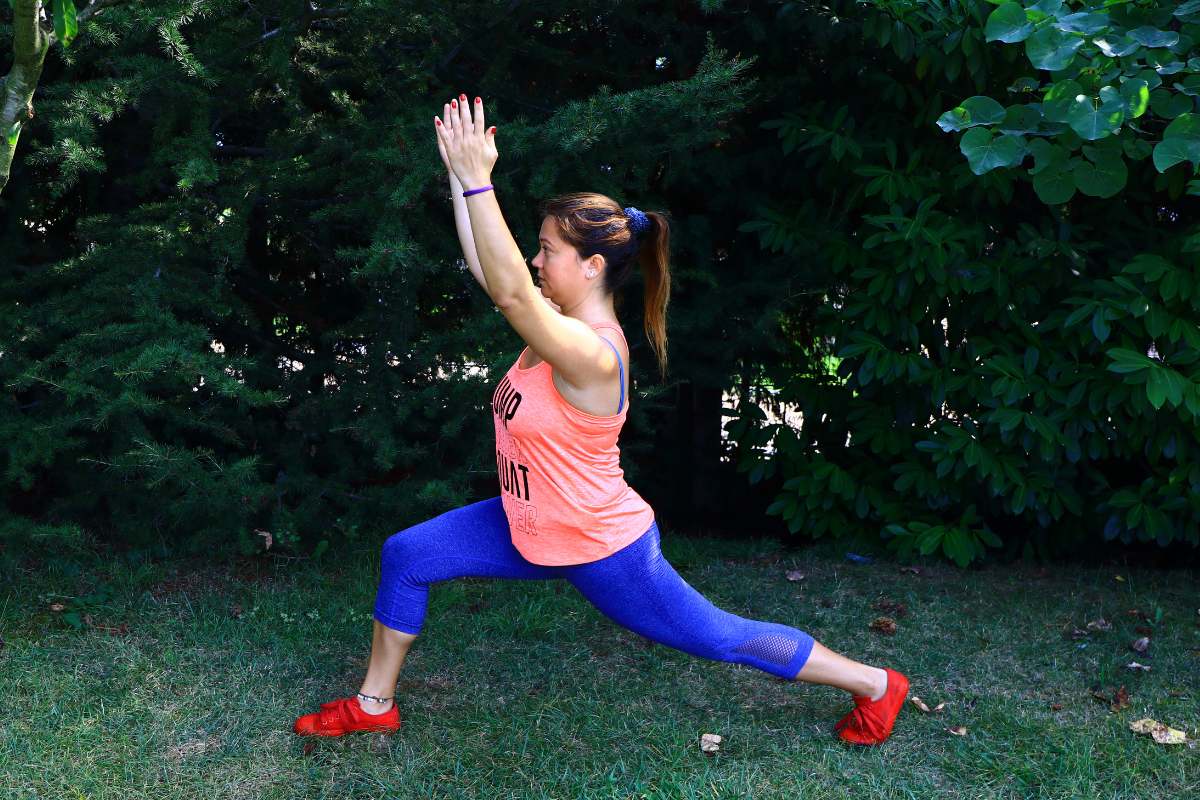How Yoga Can Supercharge Your Existing Exercise Routine
In the ever-evolving landscape of fitness, yoga is a constant that has maintained its prominence across centuries.
It occupies a distinct niche, offering a delicate blend of strength, flexibility, and mindfulness – an amalgamation rarely found in other forms of exercise.
Yoga doesn’t merely challenge the body but engages the mind, making it an holistic workout that extends beyond the physical.
Its unique attributes lend themselves well to complement other exercise routines, expanding their scope and impact.

While some exercises primarily focus on enhancing muscular strength or cardio-respiratory endurance, yoga introduces a more balanced perspective. It merges dynamic postures to build strength, stretches for flexibility, and meditative techniques for mental calmness.
This comprehensive approach can bring balance to a vigorous cardio routine, provide an active recovery after strength training, or enhance focus in sport-specific training.
Whether you’re a seasoned fitness enthusiast or a newcomer to the world of exercise, understanding how yoga complements other workouts can offer valuable insights.
This post may contain affiliate links, which helps keep this content free. Please read our disclosure for more info.
The Fundamental Principles of Yoga
Yoga, hailing from the vibrant culture of ancient India, is an age-old discipline that seeks to establish a harmonious balance between the mind and body.
At its heart, yoga is not just about exercise but a holistic lifestyle that embraces three key principles: breath control, mindfulness, and body awareness.
Breath Control (Pranayama)
Pranayama, or breath control, is a vital component of yoga. This practice involves controlling the breath by changing the speed and pattern of inhalation and exhalation.

The purpose is twofold: to enhance physical health by improving oxygenation and lung capacity, and to promote mental clarity by helping quiet the mind.
With regular practice, pranayama can boost energy levels, reduce stress, and create a sense of calm and focus.
Mindfulness
In the context of yoga, mindfulness refers to the conscious awareness of the present moment. This includes being aware of one’s current physical state, thoughts, emotions, and surroundings.
Mindfulness fosters a deeper connection with oneself and can lead to improved mental health. It helps individuals break free from negative thought patterns, reduce anxiety, and cultivate a positive outlook.
Body Awareness
Body awareness in yoga is the understanding of one’s body in space and how it moves. It’s about knowing where each part of your body is and how it feels, without needing to look at it.
This enhanced body awareness can lead to better movement patterns, improved posture, and reduced risk of injury both within and outside the yoga studio.
Yoga Styles
Yoga has evolved into numerous styles over thousands of years, each offering unique approaches to physical fitness and mental wellbeing.

- Hatha yoga, often recommended for beginners, focuses on basic postures and slow-paced stretching along with breathing exercises.
- Vinyasa yoga is characterized by a continuous flow of postures linked with breath, offering a more dynamic and challenging workout.
- Ashtanga yoga, a more demanding style, involves a specific sequence of postures with an emphasis on strength, flexibility, and stamina.
Each of these styles carries the core principles of yoga and contributes in different ways to health and fitness.
Choosing between them depends on an individual’s physical capabilities, fitness goals, and personal preferences. It’s this diversity that allows yoga to cater to a wide range of people and makes it a beneficial addition to various exercise routines.
Related Article: Exploring Different Styles of Yoga: Which One Suits You Best?
Holistic Advantages of Yoga

Yoga transcends beyond basic body stretching, functioning as a comprehensive tool for overall well-being. Its benefits extend from the physical realm into mental wellness and contribute significantly to holistic health.
Physical Benefits
Yoga as a physical discipline serves numerous roles.
Strength Development: Unlike traditional strength training, yoga uses body weight as resistance, encouraging the development of functional strength. This helps enhance stability and endurance, making everyday activities easier.
Improved Flexibility: Regular yoga practice can significantly increase flexibility. The asanas, or postures, gently stretch and lengthen muscles, thereby increasing their elasticity and improving joint mobility. This can help alleviate discomfort caused by tension and tightness.
Enhanced Balance: Many yoga poses require maintaining balance, which in turn strengthens core muscles and enhances overall body equilibrium. This can be particularly beneficial in preventing falls and improving athletic performance.
Better Posture: With its emphasis on body alignment and core stability, yoga aids in developing a better posture. It helps counteract the effects of prolonged sitting and other lifestyle factors that can lead to slumped shoulders and a hunched back.
Mental Benefits
The mental benefits of yoga are just as important as the physical.

Stress Reduction: Through deep breathing and mindful practices, yoga can help quiet the mind, reduce anxiety, and promote a sense of calm, thereby acting as a natural stress reliever.
Sharper Focus: Yoga’s emphasis on mindfulness and concentration can improve mental clarity and attention span. Regular practice can help individuals stay focused in their daily tasks, leading to improved productivity.
Holistic Health and Wellness
Beyond individual physical and mental benefits, yoga encourages a deeper mind-body connection.

It fosters an enhanced awareness of one’s own body — how it moves, what it needs, and when it needs rest. This awareness can lead to healthier lifestyle choices and improved self-care.
By reducing stress and promoting physical well-being, yoga also supports a healthier immune system, improved sleep, and better digestion.
It’s not just about getting on a mat and performing a set of postures; it’s about creating a healthier, more balanced lifestyle. The practice of yoga can be a stepping stone towards a journey of overall wellness and enhanced quality of life.
Yoga and Its Synergy with Other Forms of Exercise
Yoga, with its myriad benefits, can become an ideal companion to other exercises, enhancing their effects and providing balance. When practiced alongside different forms of physical activity, yoga can foster more efficient workouts, improved recovery, and better overall performance.
Yoga and Cardiovascular Exercise
Cardiovascular exercises, such as running, cycling, or swimming, focus on elevating the heart rate and boosting endurance. Pairing them with yoga can offer several advantages:

Improved Recovery: Yoga’s focus on mindful movement and deep breathing can help relax the body, speeding up recovery after strenuous cardio sessions. It can also help remove lactic acid buildup, reducing muscle soreness and fatigue.
Enhanced Stamina: Regular yoga practice can improve lung capacity and oxygen utilization, leading to better cardio performance and endurance over time.
Promotion of Heart Health: The calming effects of yoga can lower resting heart rate, blood pressure, and reduce stress – all of which contribute to long-term heart health.
Yoga and Strength Training
Strength training, typically involving weights or resistance exercises, is designed to build muscle mass and strength. Yoga can complement these workouts by:

Enhancing Flexibility: While strength training tends to shorten and tighten muscles, yoga works to lengthen them, aiding in flexibility. This not only counteracts muscle tightness but can also improve range of motion and performance in strength workouts.
Safeguarding Joint Health: The weight-bearing postures in yoga can help strengthen the muscles surrounding joints, protecting them from strain and injury associated with strength training.
Ensuring Muscle Balance: Strength training often targets specific muscle groups, which can lead to imbalances. Yoga, with its holistic approach, ensures that all muscle groups are worked equally, promoting balance and preventing injury.
Yoga and High-Intensity Interval Training (HIIT)

High-Intensity Interval Training, characterized by periods of intense effort followed by short rest periods, can be a demanding workout. Yoga can bring balance to these high-intensity routines by:
Aiding in Cool-Down Periods: The gentle, restorative poses in yoga can serve as an effective cool-down after HIIT workouts, helping to lower heart rate and promoting recovery.
Preventing Injuries: By improving flexibility, balance, and overall body awareness, yoga can help reduce the risk of injuries that can occur during high-intensity workouts.
Overall, yoga can serve as an excellent bridge between different forms of exercise, making your fitness routine more balanced, holistic, and effective.
Integrating Yoga into Your Fitness Regimen
Beginning a new form of exercise can often feel overwhelming, and yoga is no exception. However, with a few straightforward strategies, you can seamlessly weave yoga into your existing workout regimen, enhancing its effects and your overall fitness experience.
Starting with Basic Poses
Incorporating yoga into your routine doesn’t necessarily mean you need to dedicate an entire session to it initially.

You can start small by introducing basic yoga poses or ‘asanas’ at the end of your regular workout sessions. These poses could include:
- Child’s Pose (Balasana): This restful pose helps stretch your hips, thighs, and ankles while also calming the mind.
- Downward-Facing Dog (Adho Mukha Svanasana): This pose works to strengthen and stretch the whole body, particularly the arms, legs, and back.
- Warrior I (Virabhadrasana I): A strengthening and balancing pose, Warrior I opens up the chest, lungs, and shoulders, strengthens the arms and legs, and improves focus.
Including these and similar asanas in your routine can serve as a gentle introduction to the practice of yoga.
Emphasizing Breath Control
One of the fundamental aspects of yoga is the emphasis on breath control or ‘pranayama’. As you perform these yoga poses, pay attention to your breathing.
Try to synchronize your movements with your breath, inhaling as you stretch and exhaling as you contract or fold. This not only enhances the effectiveness of the poses but also contributes to mindfulness and stress reduction.
Engaging with Certified Yoga Instructors
To ensure you’re performing the asanas correctly and gaining maximum benefits, it can be beneficial to seek guidance from certified yoga instructors.

They can provide personalized advice based on your fitness level and goals. You can join yoga classes at a local studio or hire a personal yoga trainer.
Leveraging Online Resources
In today’s digital age, countless online resources can guide your yoga journey. Various fitness platforms offer yoga sessions tailored for different levels, from beginner to advanced.
YouTube also hosts numerous free yoga tutorials, some even focused on complementing specific workouts like running or weightlifting.
Creating a Balanced Routine
Ultimately, the goal is to create a fitness routine that’s diverse and balanced. Experiment with different poses, styles, and sequences of yoga to see what resonates with you and aligns with your fitness goals.
Remember, the practice of yoga is personal and flexible – it should serve your needs and enrich your exercise routine rather than becoming a source of stress.
With patience and consistency, yoga can become an integral part of your fitness journey, enhancing not only your workouts but also your overall well-being.
Overcoming Obstacles in Embracing Yoga
While integrating yoga into your workout routine can offer numerous benefits, it’s not uncommon to face certain challenges and misconceptions about this ancient practice.
Understanding these hurdles and the solutions to overcome them can make your transition to yoga smoother and more rewarding.
Misconception: Yoga is Too Slow
One common misunderstanding about yoga is that it’s a slow-paced practice not suitable for fitness enthusiasts accustomed to high-intensity workouts.

While some forms of yoga focus on gentle and slow movements, other styles like Ashtanga, Vinyasa, or Power Yoga are dynamic and physically challenging.
These can significantly increase your heart rate, improve strength, and offer a satisfying workout.
Solution: Exploring different styles and finding a yoga class that suits your pace and fitness goals can help debunk this misconception. You may be surprised to discover just how challenging and invigorating a yoga session can be.
Misconception: Yoga Isn’t a ‘Real’ Workout
Another prevailing myth is that yoga isn’t a “real” workout because it doesn’t involve weights or high-speed movements.

However, yoga utilizes bodyweight exercises, requiring you to lift, hold, and balance your body in various postures. This can help develop strength, flexibility, and balance – vital components of overall fitness.
Solution: Giving yoga a try and experiencing its physical demands can dispel this myth. Try incorporating it into your routine for a few weeks and observe the changes in your strength, flexibility, and overall fitness.
Challenge: Managing Time
Finding the time to add yoga to an already busy workout schedule can seem daunting.
Solution: Start by integrating short yoga sequences into your existing routine, like a quick yoga stretch after a run or a yoga cool-down post weightlifting.
As you begin to appreciate the benefits, you may find yourself naturally making more time for longer yoga sessions.
Related Article: 10 Daily Habits to Live a Happier and Healthier Life
Challenge: Listening to Your Body
Overcoming the urge to push yourself too hard can be a challenge, especially when starting a new exercise form.

Solution: Yoga emphasizes mindfulness and encourages listening to your body. Always start slow and avoid pushing into any discomfort or pain.
With time, you’ll become more in tune with your body’s needs, making your workouts more efficient and safe.
By dispelling misconceptions, adapting to your individual needs, and fostering a spirit of patience and consistency, you can successfully overcome challenges and make yoga a rewarding part of your fitness journey.
Closing Thoughts and a Useful Resource
Merging yoga with your established exercise regimen offers a holistic approach to fitness. It bolsters physical capacities such as strength and flexibility while also fostering mental clarity and stress reduction.
The exploration and integration of various yoga styles can truly enrich your fitness voyage, providing a well-rounded approach to wellness.
If you’re curious to delve deeper into yoga’s potential, particularly for weight management, the Yoga Fat Loss Bible can be an excellent resource.

This comprehensive guide can help you navigate the world of yoga, offering detailed insights, practical routines, and dietary advice to support your fitness goals.
Click here to learn more about the Yoga Fat Loss Bible!
Embrace yoga, and welcome a transformative shift in your health and well-being journey.

